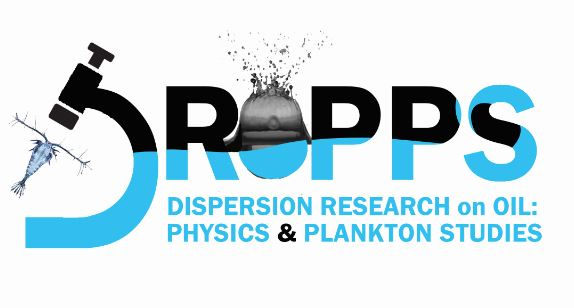Scientists isolated bacteria from Gulf of Mexico surface waters and used them in microcosm experiments to identify those that simultaneously degrade oil and produce mucus-like materials (exopolymeric substances or EPS). Using 16S rRNA gene analysis, they identified Alteromonas and Thalassospira as the main bacteria species that produce EPS when consuming oil and/or dispersed oil. When the microbes consumed oil in the presence of Corexit, the EPS they produced had a higher protein-to-carbohydrate ratio (a 5- to 20-fold increase in protein) than oil-only and control treatments. This higher protein content in the EPS enhanced the formation of larger and more marine oil snow aggregates.
The authors published their findings in PLOS ONE: Extracellular polymeric substances (EPS) producing and oil degrading bacteria isolated from the northern Gulf of Mexico.
Marine bacteria produce EPS as a strategy for growth by adhering to solid surfaces and to survive adverse conditions like temperature, salinity, and nutrient extremes and pollution. Because EPS is a sticky substance, floating particles adhere to it; when these particles become heavy enough, they become negatively buoyant and sink, hence the term marine snow. Sinking aggregates that included oil particles, known as marine oil snow, were a significant mechanism during Deepwater Horizon that transported oil from surface waters to the seafloor (see Study Summarizes Current Knowledge on Marine Oil Snow During and After Deepwater Horizon).
Earlier studies1-4 identified bacterial communities and genera associated with hydrocarbon degradation, but not much is known about bacteria that produce EPS in response to the availability of carbon sources like oil and dispersed oil. The EPS component is significant because it influences the fate of oil and chemical dispersants through emulsification, degradation, dispersion, aggregation, and sedimentation. This current study sought to fill that information gap by associating bacteria that consume oil with EPS production.
The team used a scanning electron microscope to visualize the bacterial cells and the EPS. After isolating 100 strains, they identified nine as producing mucus-like aggregates while using oil or dispersed oil as a carbon source. Alteromonas and Thalassospira, the primary isolates, preferably biodegraded alkanes (17–77%) compared to polycyclic aromatic hydrocarbons or PAHs (0.90–23%). These findings further revealed that Thalassospira effectively degraded alkanes and PAHs, contrary to previous claims of its greater role in PAH degradation. Also, since Alteromonas utilized mainly naphthalenes but not 3-4-ring PAHs, this might indicate that Alteromonas in oil-contaminated surface waters prefer fresher oil over degraded oil.
Study author Hernando Bacosa discussed their findings, “The presence of oil and Corexit helps in the formation of marine snow. During Deepwater Horizon, the bacteria Alteromonas and Thalassospira were detected in abundant quantity in the Gulf of Mexico waters. Because these bacteria produce lots of EPS and at the same time eat lots of oil as source of carbon and energy, they are important in the removal of oil from surface waters.”
References
- Study Finds Natural Sunlight Affects Oil-Degrading Bacteria Composition and Dynamics
- Study Finds Environmental Factors Influence the Selection of Oil-Degrading Microbes
- Study Identifies Oil Degraders that Stand Ready for Hydrocarbon Inputs
- Oil-derived marine aggregates – hot spots of polysaccharide degradation by specialized bacterial communities.
Data are publicly available through the Gulf of Mexico Research Initiative Information & Data Cooperative (GRIIDC) at doi:10.7266/N76H4FXF. The ca. 1400 bp sequences of the nine strains are available in the GenBank database with accession numbers MG214522 to MG214530.
The study’s authors are Hernando P. Bacosa, Manoj Kamalanatha, Meng-Hsuen Chiu, Shih-Ming Tsai, Luni Sun, Jessica M. Labonté, Kathleen A. Schweh, David Hala, Peter H. Santschi, Wei-Chun Chin, and Antonietta Quigg.
By Nilde Maggie Dannreuther. Contact maggied@ngi.msstate.edu with questions or comments.
************
This research was made possible in part by a grant from the Gulf of Mexico Research Initiative (GoMRI) to the Aggregation and Degradation of Dispersants and Oil by Microbial Exopolymers (ADDOMEx) consortium.
The Gulf of Mexico Research Initiative (GoMRI) is a 10-year independent research program established to study the effect, and the potential associated impact, of hydrocarbon releases on the environment and public health, as well as to develop improved spill mitigation, oil detection, characterization and remediation technologies. An independent and academic 20-member Research Board makes the funding and research direction decisions to ensure the intellectual quality, effectiveness and academic independence of the GoMRI research. All research data, findings and publications will be made publicly available. The program was established through a $500 million financial commitment from BP. For more information, visit http://gulfresearchinitiative.org/.
© Copyright 2010-2019 Gulf of Mexico Research Initiative (GoMRI) – All Rights Reserved. Redistribution is encouraged with acknowledgement to the Gulf of Mexico Research Initiative (GoMRI). Please credit images and/or videos as done in each article. Questions? Contact web-content editor Nilde “Maggie” Dannreuther, Northern Gulf Institute, Mississippi State University (maggied@ngi.msstate.edu).


